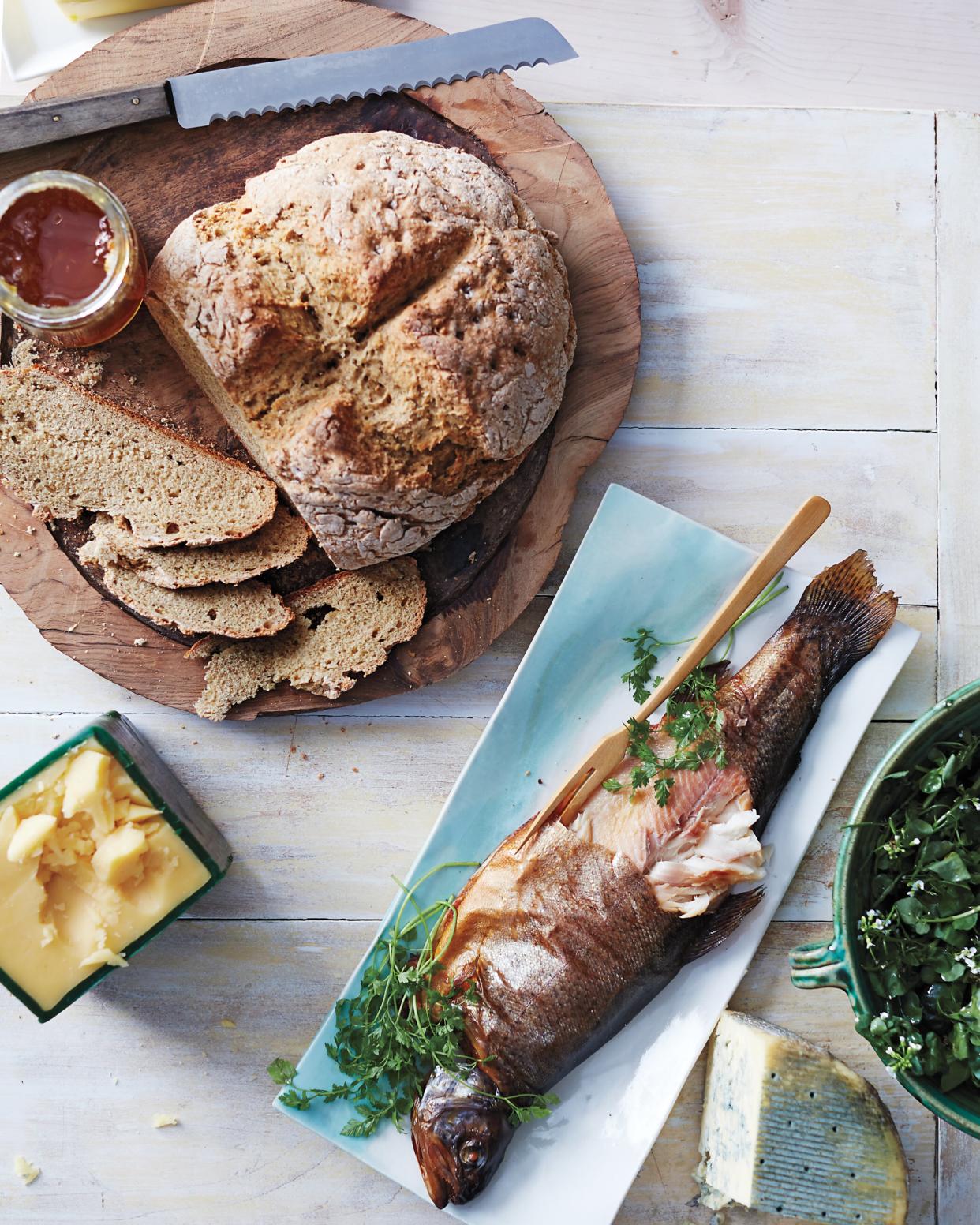What Is Soda Bread, and Do the Irish Actually Eat It?

Johnny Miller
If you were born and raised in Ireland, soda bread is likely what you grew up eating at nearly every meal. It's served first thing in the morning as part of a full Irish breakfast, with tea in the afternoon, and alongside beef or lamb stew or any number of other Irish specialties at dinner. Traditional soda bread has just four ingredients: flour, baking soda, salt, and buttermilk. Brown bread, made from stone-ground whole-wheat flour, is the most common loaf found on Irish tables. White soda bread is made with all-purpose white flour.
According to Darina Allen, the grande dame of Irish cooking and author of multiple books on the subject, "From earliest times, breadmaking was an integral part of daily life in almost every home…even in the poorest country cabin, fresh soda bread would have been mixed on a wooden baking board and baked on the griddle, or…over the ember of the turf fire." Those loaves featured Irish wheat and buttermilk—either the by-product of butter making, or in the days before refrigeration, sour milk that needed to be used up. The lactic acid in the buttermilk reacts with the alkali baking soda to create carbon dioxide, which in turn causes the bread to rise. Baking soda was introduced to Ireland (where it's known as bread soda) in the 1830s. Since then, it's been a staple in Irish home (and restaurant) kitchens. Incidentally, historians trace the development of baking soda to Native Americans, who first used pearl ash as a way to leaven bread.
One this side of the Atlantic, what we call "Irish soda bread" is more rich and sweet, usually studded with raisins and caraway seeds. These cakey, scone-like loaves often include eggs and butter for tenderness and more flavor. It's nearly impossible to find an accurate date when it became known as the definitive soda bread in the United States. Nevertheless, it's been on the menu in Irish restaurants and bars on St. Patrick's Day and sold in bakeries throughout Irish-American strongholds all year long for as long as anyone can remember. Though its overall shape and structure derive from those early Irish loaves, it bears more of a resemblance to a cake known as Spotted Dog (or Spotted Dick, not to be mistaken for the British steamed pudding of the same name). To further confuse matters, Spotted Dog is known as Railway Cake when it's baked in a loaf pan. Good luck keeping all those names straight!
Related: What Do the Irish Eat on St. Patrick's Day?
Whatever it's called, soda bread is among the easiest, most forgiving home-baked goods, and it's one of the quickest breads to go from mixing bowl to table. Since there's no yeast involved, it's nearly impossible to mess it up. In fact, the less you handle the dough, the better. As Allen explains, when it came to traditional soda bread, "it was a compliment of the highest order to be described as having 'a light hand.'" If you're new to bread making, you might want to start with soda bread. Martha's take on the authentic Irish loaf—with a combination of graham and all-purpose flours filling in for the Irish whole grain, and butter added for richness—and this rye version are both heavenly served with smoked trout, strong cheeses like Cashel blue, warm bowls of hearty soup, or simply slathered with salted Irish butter. From there, you can try one of the sweeter, cakier versions.
The last step in making any loaf of soda bread is to cut a cross in the top of the dome of dough. According to Irish legend, this is to "let the devil out," but the technique actually serves a practical purpose. The deep slash allows the dough to cook evenly from crust to inner crumb, creating the inimitable texture that American culinary icon James Beard described as "velvety."
As for the name, the easiest way to clear up the confusion may be to simply refer to the raisin- and caraway-studded version as Irish American Soda Bread, as it's called in the Joy of Cooking. In that most American of American cookbooks, the bread is aptly described as "richer, sweeter and more cake-like than authentic Irish soda bread, which we are assured never made the acquaintance of a raisin or caraway seed either." Perhaps adding the "American" qualifier between "Irish" and "soda" makes saying it too much of a mouthful.
The one caveat about making soda bread from scratch is that it is best eaten on the day that it's baked. It doesn't keep nearly as well as yeast-risen breads. As long as you have enough good-quality butter, some nice fruit jam, and some Irish smoked salmon, however, that shouldn't be a problem.

